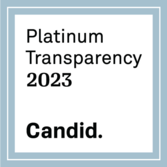Be Part of the Solution
Each person can help reduce the amount of wastewater and reduce toxic contaminants in it. Listed below are several simple ways to conserve water and to practice source reduction in homes and communities.
Simple Household Solutions
- Take quicker showers. The average shower uses 25 to 50 gallons of water. Be conscious of the time you spend in the shower and the water you could be saving if you took a quicker shower.
- Every time you flush the toilet in your home, 4 to 6 gallons of water enter the wastewater system. Eliminate excess volume by only flushing when necessary—not when cleaning hairbrushes, killing insects, or any other non-traditional function. Most new toilets have settings for water level—make sure your toilet is set on a low level. In older commodes, place a plastic container (about 1 liter) already filled with water and tightly capped in the tank to reduce the volume of water filling the tank.
- Each load of laundry done in the average domestic washing machine expends 30 to 50 gallons of water. Wash only full loads to prevent multiple washings and further water usage. When shopping for new appliances look for "water efficient" models.
- Even though it is a time-saver, each cycle of the dishwasher still uses 4 to 8 gallons of water. Even worse, washing dishes by hand uses about 20 gallons of water.
- Washing your hands or brushing your teeth can use from 3 to 6 gallons of water. Up to one gallon of water can run out of a faucet in only 60 seconds. Make sure to turn off the water, except when directly using it.
- Install water conservation devices on showerheads and faucets. Also use nozzles for hoses to prevent wasting water. Devices such as these can significantly cut down on water waste, without impeding your usage.
Reducing Toxins and Chemicals in Your Household
- The average household contains 10 gallons of hazardous waste stored under kitchen sinks, in bathrooms, in garages, and in workshops in the form of cleaners, disinfectants, batteries, paints, solvents, pesticides, and other chemicals. Be conscious of the chemicals in your home and try using safer alternatives.
- Excessive use of bleaches can be toxic. Try using full strength Borax or safe non-chlorine bleach. If you must use bleach, do so sparingly.
- Some detergents use an extraordinary amount of phosphates, which lead to algal blooms that harm marine life in the bodies of water that receive effluent carrying these phosphates. Try using laundry soaps like Borax or other non-phosphate detergents. For dishwashers, try using 50% washing soda and 50% Borax.
- Drain cleaners are highly toxic. Try using alternatives like ½ cup of baking soda followed by ¼ cup of vinegar. Cover and flush with boiling water.
- For general cleaning, try using Bon Ami or ½ cup of Borax dissolved in 1 gallon of warm water. For tough stains, use half of a lemon dipped in Borax and rub.
- One quart of vinegar and one quart of warm water makes a great and safe glass cleaner (vinegar concentrations can be altered to vary strength of cleaner).
Get Involved in Your Community
First, find out when your treatment facility is seeking a permit renewal and contact the facility for up-to-date information. Seven treatment facilities will be seeking permit renewals in mid-late 2001. Another seven facilities expect to be issued permit renewals by summer 2001.
Below are suggestions about how to get involved in the permit renewal process.
- Ask questions and attend local hearings about expansions, new sources, and capacity levels. Support sewer maintenance programs and try to gather support for these issues.
- Attend town council meetings and voice your opinion. Organize citizens who are concerned about the issue and develop a plan of action.
- Join your local environmental commission and stay active and up to date with events and proceedings. Read local environmental newsletters or send in articles or letters to the editor to local newspapers to be published regarding an issue of concern.
- Obtain information about facility capacity and expansion by checking out the NJDEP website, specifically the Water Quality Division, under Capacity Assurance Plan (see Appendices C and D). Proactively scrutinize your local wastewater treatment plant to ensure your local waterways and beaches stay healthy and clean.
- Be vocal about the costs of suburban sprawl on our watershed; specifically, the effects of new and expanded wastewater treatment facilities on the dwindling supply of freshwater.
- Next, find out what ocean discharging treatment facility serves your town.

